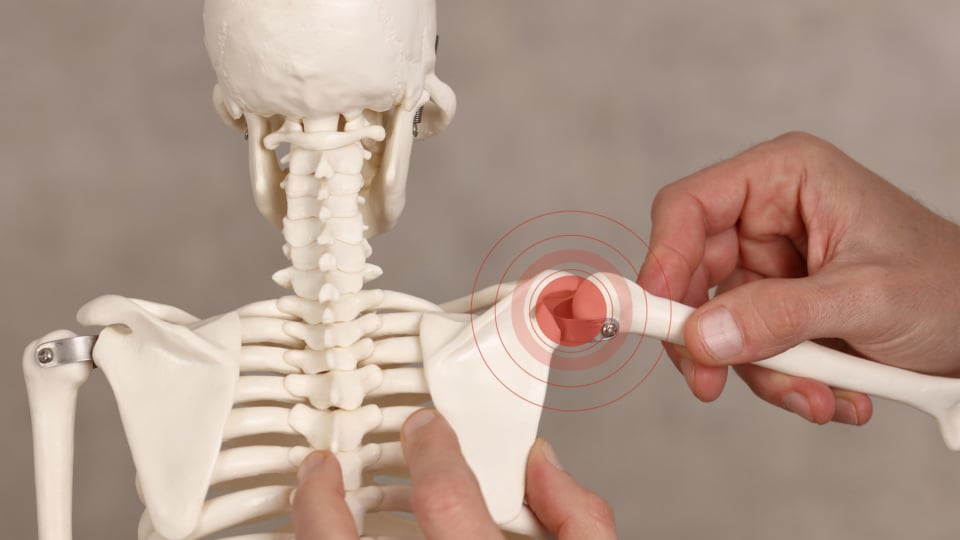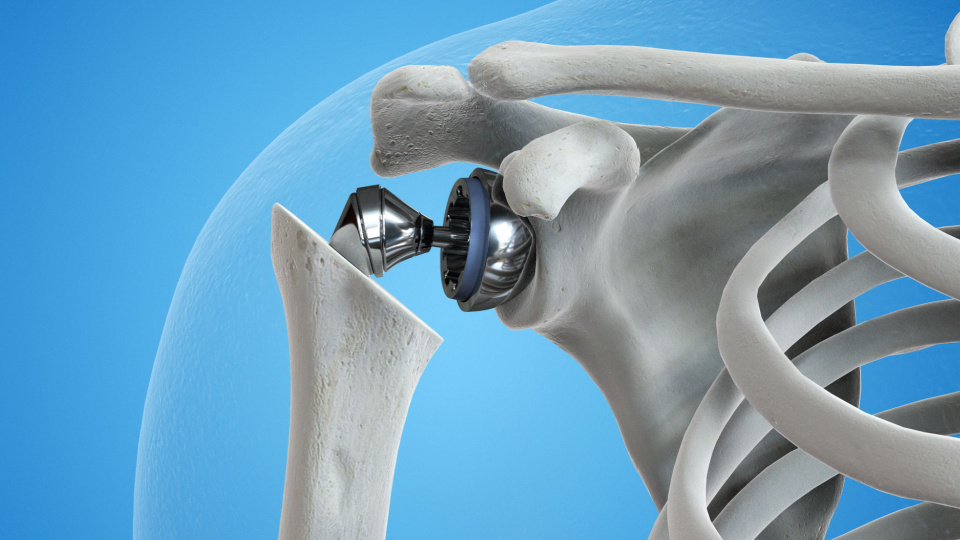Shoulder Joint Replacement
Orthopedic
If you’re looking for a way to relieve persistent shoulder pain and rediscover the freedom of pain-free movement, Shoulder Joint Replacement Surgery may be the perfect solution.
Just like the hip, the shoulder joint is a ball and socket joint and is considered the most mobile joint in the human body. The shoulder joint allows us to move our arms in almost all directions. Numerous muscles and ligaments stabilize the joint. Nevertheless, it is more sensitive than other joints. That’s why it can easily happen that you dislocate your shoulder, for example, in a fall.
The shoulder joint consists of a joint ball, which forms the upper end of the upper arm, and a socket on the shoulder blade. Because the socket is not as deep as that of the hip joint, a large range of motion is possible. Both parts of the joint are covered with a layer of cartilage, and the synovial fluid between them reduces friction and allows pain-free movement.
Most often, an artificial shoulder joint is used due to osteoarthritis in the shoulder. This leads to increased wear of the cartilage layer, which eventually results in almost unbearable pain. Patients are severely restricted in their movements and thus also in their quality of life.
Before the surgical procedure, the doctor will first make sure that all other treatment methods have been exhausted.
Shoulder joint surgery takes about 1.5 hours and is usually performed under general anesthesia.

There are different types of artificial shoulder joints. Either only the glenoid cavity, only the condyle or both together can be replaced. In this case, it is called a total prosthesis. Here, too, there are different types and models, depending on the patient’s individual condition. Your attending physician will decide with you which method and model is the most suitable for you.
During shoulder joint replacement surgery, the surgeon usually makes an incision about 6-10 cm long, usually at the front of the shoulder because there are fewer nerves there. The joint is exposed, and this usually requires detaching a muscle, which is then reattached afterward. The diseased bone and cartilage are removed, and the artificial joint is inserted. After a precise functional test, the operation is completed.
The durability of artificial shoulder joints used to be about 10 years, but today it is estimated to be about 15 years. The hospital stay lasts only a few days, and the operated arm must first be immobilized to avoid excessive pain.
The rehabilitation phase takes place on an outpatient basis and lasts about three weeks. The goal is for patients to be able to perform activities of daily living again independently and without pain. These include dressing, brushing teeth, shaving, combing hair, cooking and eating.
After the insertion of an artificial shoulder joint, sports with a risk of falling or many jerky movements, such as tennis, soccer and most ball sports, should be avoided. Swimming, jogging, hiking or dancing, to name a few, are more suitable for you.
Shoulder joint replacement surgery is considered a standard procedure today. In Germany, about 60,000 artificial shoulder joints are implanted every year.
All you need to know about orthopedic treatments, including price, aftercare and healing process, or contact us!

FAQ
What is shoulder joint replacement?
Shoulder joint replacement, also known as shoulder arthroplasty, is a surgical procedure that involves replacing damaged or diseased parts of the shoulder joint with artificial components. It is performed to relieve pain, increase mobility and restore function in individuals with conditions such as severe arthritis, rotator cuff tear arthropathy or fractures that cause irreversible damage to the shoulder joint.
What are the signs for a shoulder replacement?
Signs that may indicate the need for a shoulder replacement, known as shoulder arthroplasty, include persistent and severe shoulder pain that does not respond to conservative treatments, such as rest or medication. Limited range of motion and difficulty in performing daily activities due to shoulder pain and stiffness are common indicators. Conditions such as osteoarthritis or rheumatoid arthritis affecting the shoulder joint, leading to pain, inflammation, and functional limitations, may necessitate a shoulder replacement. Rotator cuff tear arthropathy, characterized by an irreparable tear of the rotator cuff and subsequent joint degeneration, can also be a sign for shoulder replacement. If previous treatments have been unsuccessful in providing sufficient pain relief or functional improvement, a shoulder replacement may be considered as the next course of action. Consulting with an orthopedic specialist is crucial for a thorough evaluation, including medical imaging, to determine the appropriateness of a shoulder replacement based on your specific symptoms, medical history, and overall health.
Can a shoulder joint be replaced?
Yes, shoulder joint replacement, also known as shoulder arthroplasty, is a surgical procedure where a damaged or diseased shoulder joint is replaced with an artificial joint or prosthesis. The procedure involves removing the damaged parts of the shoulder joint, including the ball (head of the upper arm bone or humerus) and the socket (glenoid), and replacing them with artificial components made of metal, plastic, or a combination of both.
How successful is a shoulder replacement?
Generally, shoulder replacement surgery has a high success rate in terms of pain relief and functional improvement. Studies have shown that the majority of patients experience significant pain reduction and improvement in shoulder function after the procedure. According to research and clinical data, success rates for shoulder replacement surgery range from 80% to 95% in terms of pain relief and patient satisfaction. Factors that can influence the success of shoulder replacement include proper patient selection, adherence to postoperative rehabilitation and therapy, and the skill and experience of the surgeon performing the procedure. It is important for patients to follow their surgeon’s recommendations for postoperative care and rehabilitation to optimize the chances of a successful outcome.
Contact us now in case you have any questions!
Types of Treatments
Request Form
Get your free consultation
- Need guidance and reassurance?
- Talk to a real person from MedClinics!
- Let's find the perfect doctor together.
